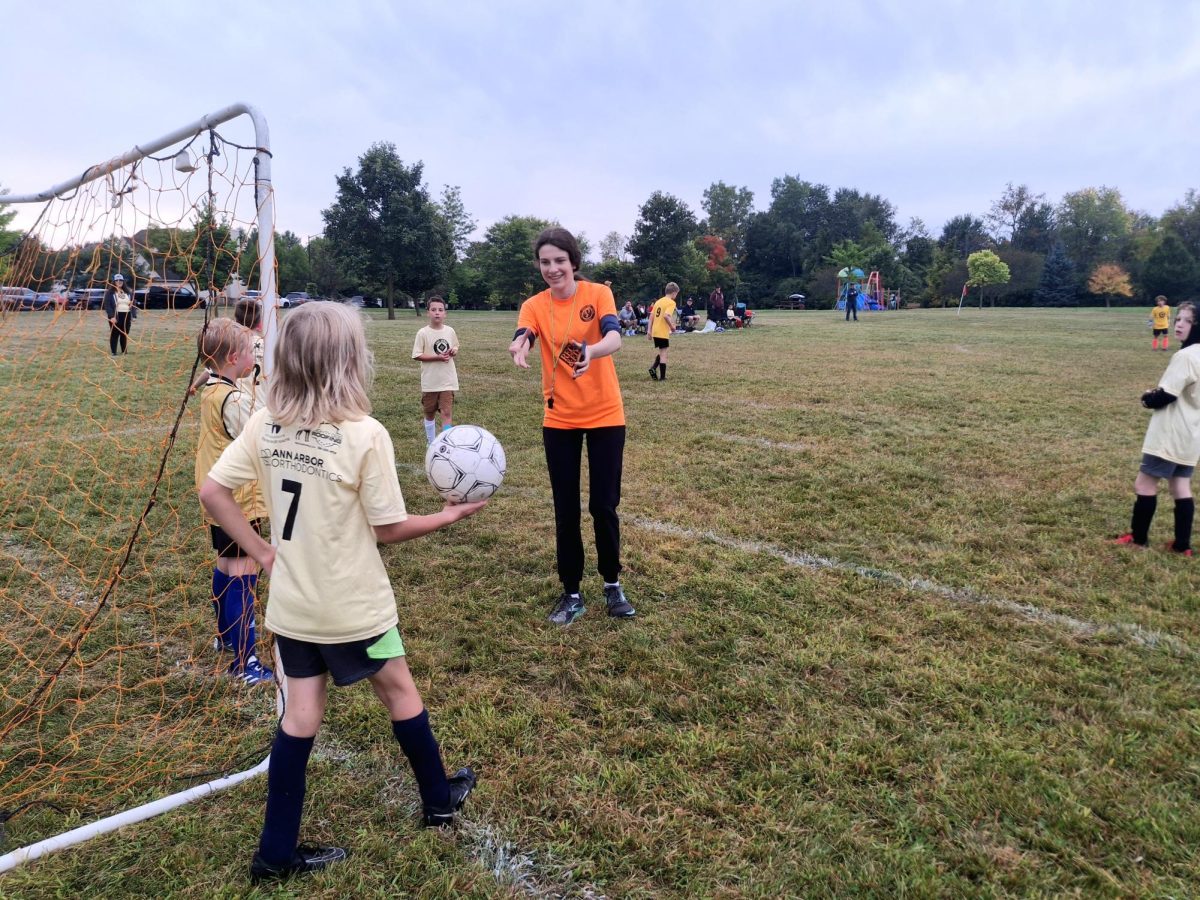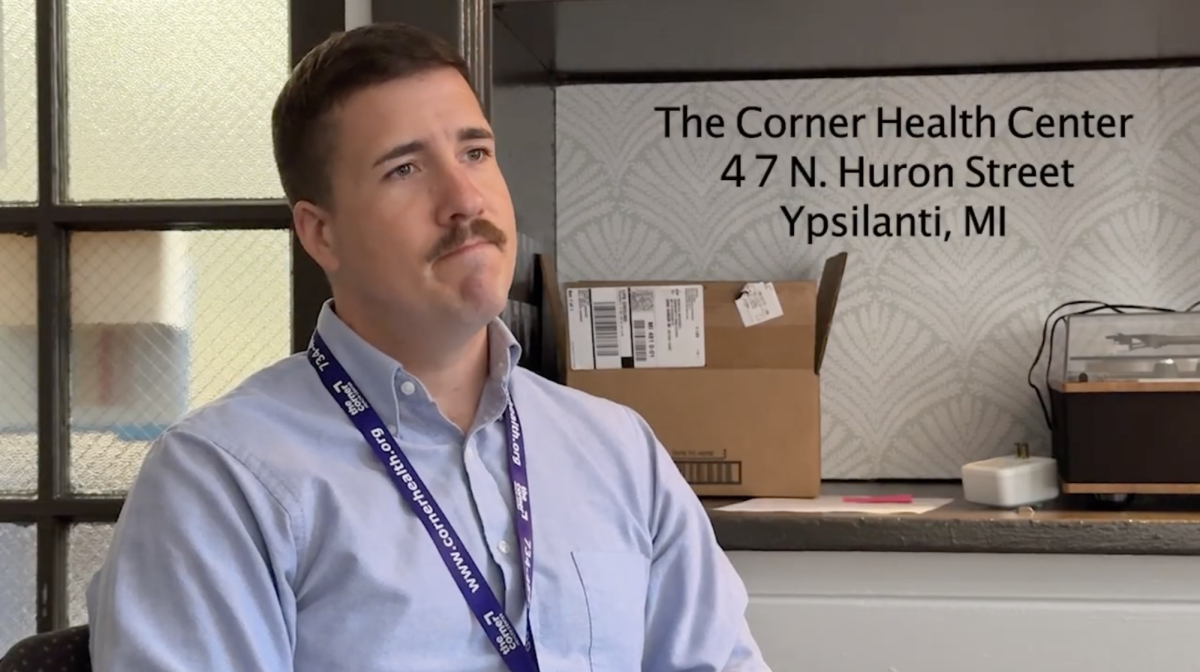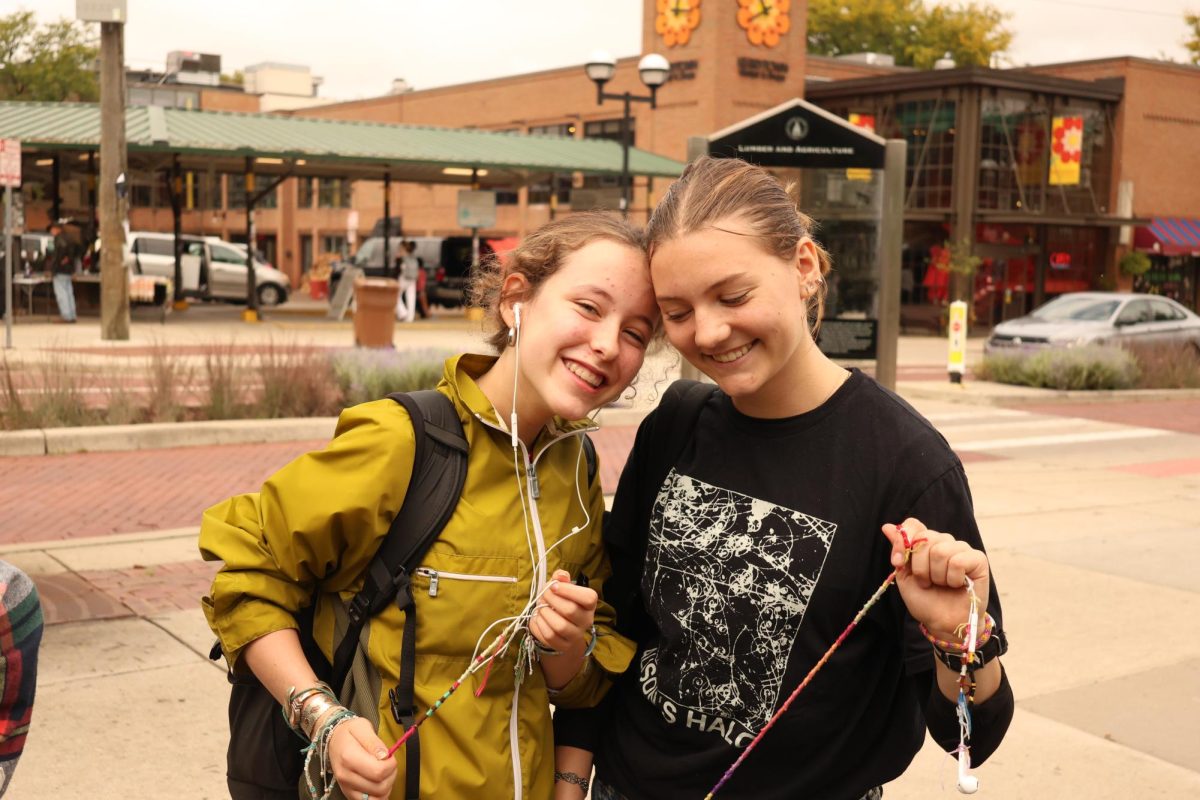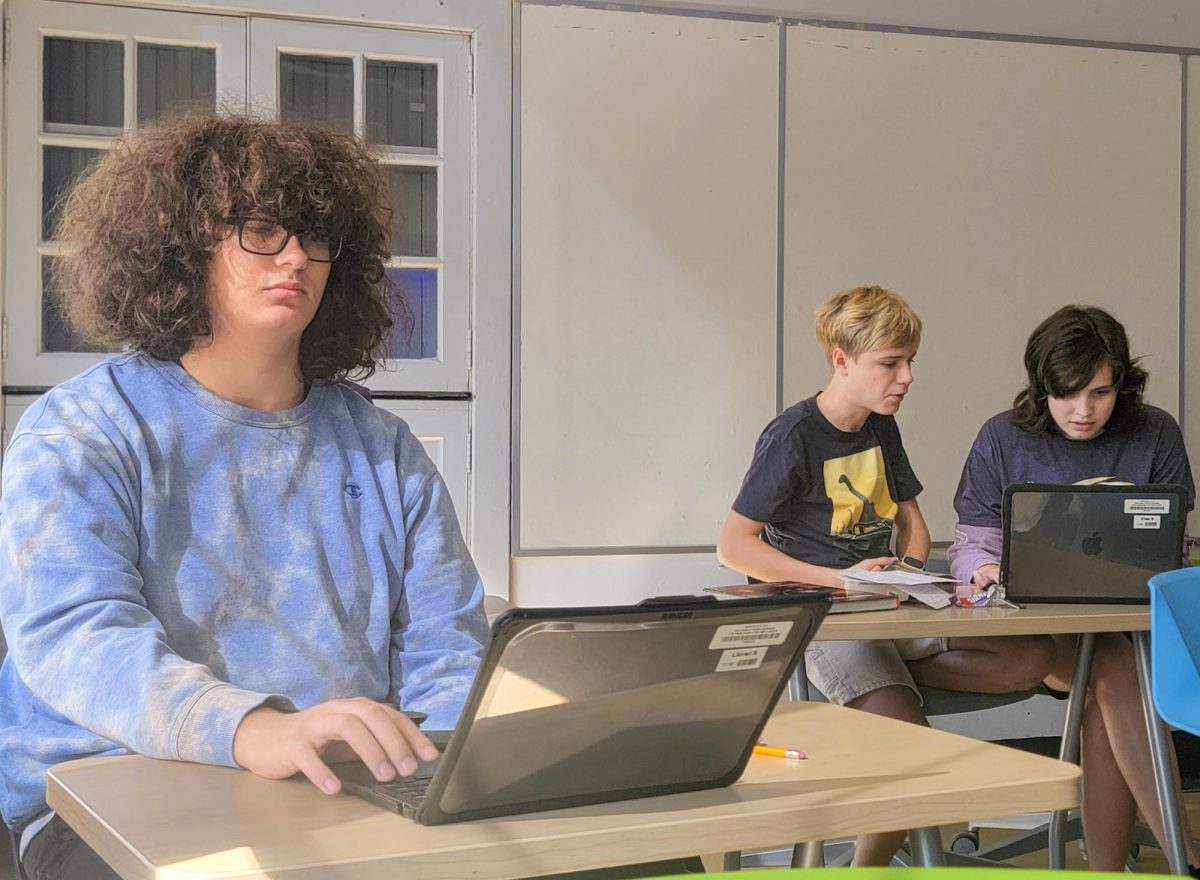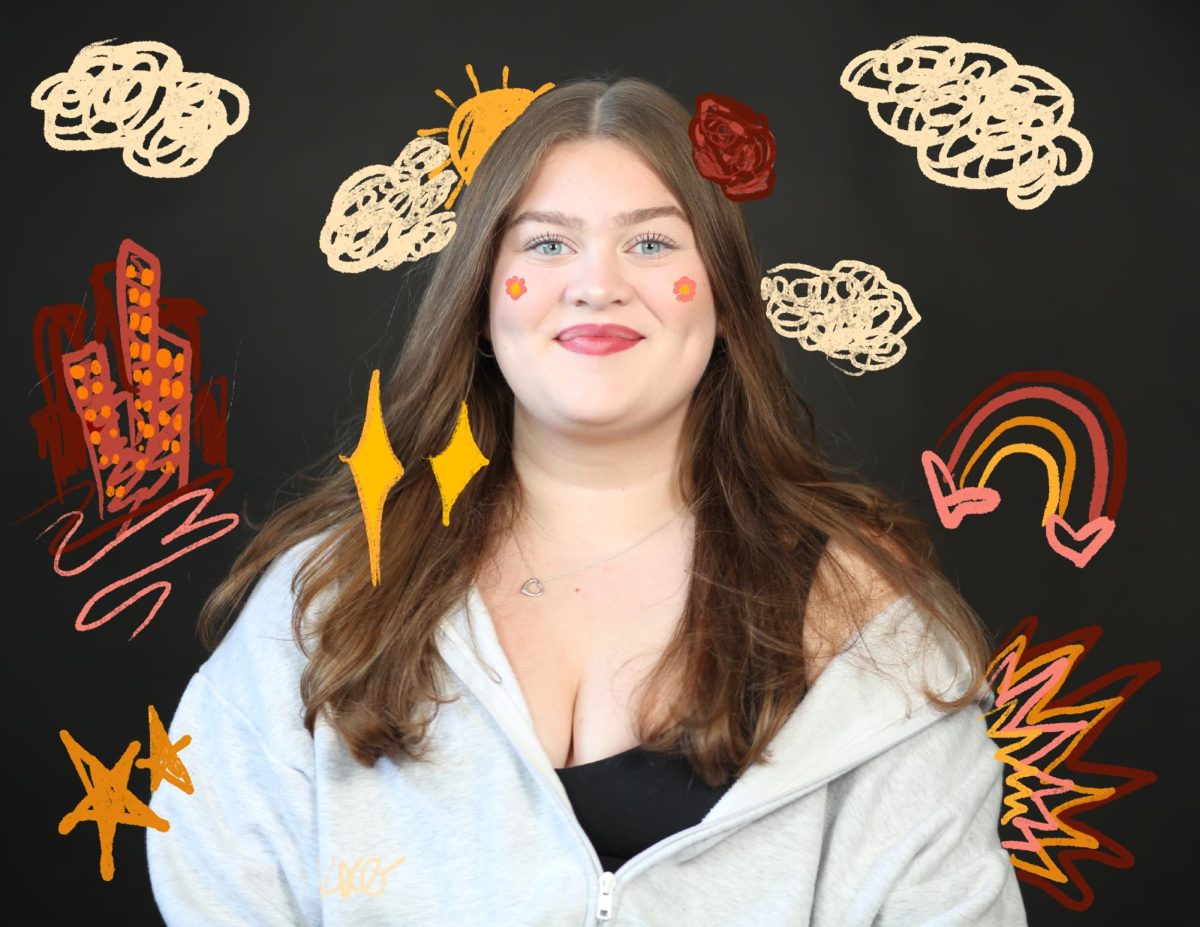When Ari Taylor sat in the hallways of CHS and was asked by an older peer if she could ‘touch her hair,’ she was stunned.
She had seen people who looked like her being discriminated against in the same manner on the internet, but never had it happened to her personally. The microaggressions, though, were not a new phenomenon.
Taylor had grown up in Ann Arbor, MI with little to no diversity. She has gotten used to being the only Black person in a classroom, especially at CHS. Growing up surrounded by predominantly white people, there weren’t many opportunities to connect and find what Black culture meant for her.
She recalls being in elementary school trying to fit in with her peers. She straightened her hair for years because no one in her class had type four curly hair like her. She straightened so routinely at one point that she didn’t even realize her natural pattern.
“It became so damaged, but I just wanted to fit in so bad because like as a little kid, you just want to be like everyone else,” Taylor said. “You want to look like everyone else, even if it is super detrimental to who you are.”
Taylor has felt like she’s been walking a tightrope. She’s never felt completely a part of her community because she falls outside of the constraining and oppressive stereotypes that surround the Black community, leading her to be labeled as whitewashed.
“It’s harmful because [it] reinforces the idea that we’re all the same when we’re not,” Taylor said. “Being Black or being a part of Black culture means you’re free to be anything. You don’t have to fit a specific set of rules, but not everyone agrees.”
In school, her white counterparts have said they were surprised she wasn’t one of “those Black girls” or “ghetto.” She’s faced microaggressions and stereotypes being forced upon her.
“There was this girl in middle school that asked me, ‘If you’re a Black, how come you don’t listen to rap music?’” Taylor said. “I was like, ‘Okay, well, I do listen to rap, which is not the only thing I listen to because we’re not a monolith.’”
She has felt like she doesn’t have as many ‘cultural traditions’ because of the fluidity of Black culture. Her family doesn’t know where exactly they are from, just that their lineage traces back to Africa somehow.
“I don’t know where I’m from. I just know that I’m Black American and that I was from Africa, at some point hundreds of years ago,” Taylor said. “I don’t know where in Africa, so I don’t know which traditions to connect with.”
This uncertainty has left Taylor feeling lost and jealous of those who can so easily connect with their lineage, something she’ll never be able to truly know.
“Black people have no idea where we’re from because of slavery. Those records were just erased so I can only trace my family so far back,” Taylor said.
Since Taylor doesn’t know exactly where in Africa her family is from, she can’t just pick a culture to take part in. She understands the size and complexity of the continent and the subcultures that exist within each country.
 “I can’t just celebrate African culture. Nigeria is different from Cameroon, and I don’t know where I’m from. So I don’t know which cultural traditions to take part in,” Taylor said.
“I can’t just celebrate African culture. Nigeria is different from Cameroon, and I don’t know where I’m from. So I don’t know which cultural traditions to take part in,” Taylor said.
On top of the uncertainty, Taylor has often heard the statement that Americans don’t have culture. She disagrees, especially as it pertains to Black Americans, and knows there’s a culture within the uncertainty of lineage.
Nevertheless, with all of the conflicting viewpoints and the family’s history, it’s been hard for Taylor to find what culture means to her.
Finding a sense of belonging, identity, and courage can be difficult. Especially at a predominantly white school. She’s found that though CHS, and Ann Arbor, pride themselves on their progressive values, microaggressions, discrimination, and prejudice persist.
Taylor commonly finds being spoken over by her white counterparts. She understands why, but also realizes how detrimental it can be.
“They’re trying to be helpful when they speak for people of color, but they don’t understand what it’s like,” Taylor said.
One way Taylor has found what culture means to her might not be in a physical space but through social media. She’s learned methods for doing her natural hair and subscribes to messages from influencers that reinforce positive messages like the fact that type four curly hair can be pretty. Social media has shown her that you don’t have to straighten your hair to be pretty, a lesson her elementary school self didn’t know.
“You don’t have to be like everyone else to be pretty. I found that by watching TikToks by other Black creators I’ve seen the beauty in my natural features and have grown into them,” Taylor said.
Taylor has come to understand that it’s not bad to be unique, but beautiful.
As Taylor continues to grow up, she’s been growing into herself and her culture. She strives to learn about and implement Black fashion, music and hairstyles into her life. Two years ago, for the first time, she started to wear braids. She decided to do so, not only to try something new but to connect more with herself.
As Ari Taylor grows, so does her value and appreciation for her culture.
Kaylee Gadepalli, a sophomore at CHS, also values her unique sense of identity, but she hasn’t always. Being biracial, she’s felt it can be hard to know how to identify.
“I think one [culture] would be hard enough on its own, but with two it’s always like you’re second-guessing yourself,” Gadepalli said.
In her childhood, she grappled with not feeling ‘Indian enough’ or ‘Chinese enough.’ Without speaking either language, it was hard to connect with that area of her life. Looking back, Gadepalli was more connected to both of her cultures than she thought. She experiences Indian and Chinese cultures every day: like getting her haircut at a Chinese salon, eating Indian food, or celebrating cultural holidays.
“I used to go to Chinese Sunday school,” Gadepalli said. “There would always be a big celebration on Chinese New Year. We’d go to this big auditorium and all the different classes would have their event they put on. Every year we had to sing a song in Chinese and wear outfits and dance.”
After the COVID-19 pandemic, she and her family haven’t been able to take part in as many cultural celebrations and it was harder to connect with people in her community; but being close with her siblings, Gadepalli has been able to share her experiences and struggles with them. Much of her culture is woven into her family and home life.
Cultural heritage is very important to who Gadepalli is as a person. Being biracial gives her a unique sense of identity, but cultural heritage can be complicated. Culture is made up of many different things for Gadepalli.
“It’s the food you eat, the clothes you wear, the people who you can connect with, and the holidays you celebrate,” Gadepalli said. “It’s built into your everyday life.”
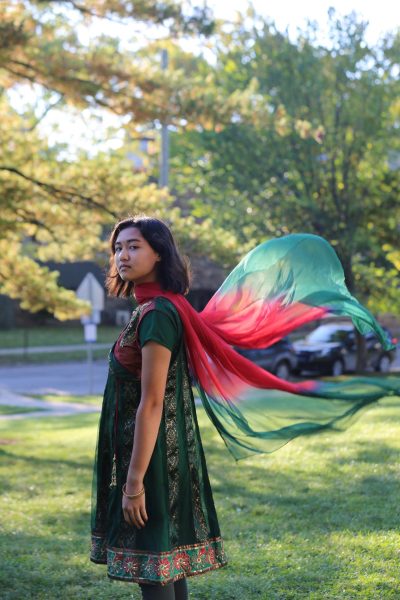 Gadpealli felt like she never fit into the Asian stereotype of being a doctor, engineer, or someone in STEM; she always loved focusing on humanities and literature. However, the stereotype and model minority myth has still affected her.
Gadpealli felt like she never fit into the Asian stereotype of being a doctor, engineer, or someone in STEM; she always loved focusing on humanities and literature. However, the stereotype and model minority myth has still affected her.
“If I do something that I’ve worked hard for and people say, ‘I guess you were just born being smart’; for me, that’s kind of disregarding all the hard work I’ve put in,” Gadepalli said.
She knows to get better at something she has to work hard. But, she’s faced people who don’t acknowledge her efforts and the journey to how she got where she is.
“There’s a lot of things people think about you before you’ve even met them,” Gadepalli said.
She feels she not only has to represent herself but also other Asian American women.
“If I do or say something that people don’t like, then it doesn’t just fall harshly on me. It falls harshly on every Asian, every female, every biracial person,” Gadepalli said. “It kind of feels like your whole race is riding on you.”
She’s always been self-aware of who she is and what she represents. She used to worry that people would take what she said the wrong way and always second-guessed herself in everything she did. Gadepalli realized that she isn’t responsible for how people act, and instead tries to do the best from her standards.
Gadepalli finds a sense of happiness from being connected to her culture.
“I think it’s special because my family and my culture have always been connected,” Gadepalli said. “We always do things together.”
Through an awareness of intersectionality, Gadepalli can better acknowledge herself and her values. She strives to be true to herself and not allow anyone to define her. She relies on people with more experience for their advice and wisdom.
“It’s always going to be a mix,” Gadepalli said. “It’s not going to be black and white.”.






